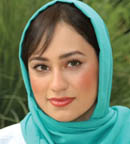TikTok, a social media platform that allows users to create and share short bite-sized videos, has quickly become one of the most popular channels worldwide with more than 1.5 billion monthly active users, according to Statista. Much like its predecessors, TikTok provides a platform for both health-care providers and non-health practitioners to discuss various health topics.1 Unfortunately, the quality of health education on TikTok varies widely and its largely unregulated platform renders its content susceptible to falsehoods and misinformation.
Dr. Zhu recently spear-headed a research study published in Ophthalmology and Therapy that evaluated popular ophthalmology content on TikTok. Specifically, the study analyzed the quality of educational content, including the presence of misinformation.2
Herein, we provide an overview of the paper’s findings as well as discuss potential ways to overcome the spread of misinformation found on TikTok.
WHAT WE LEARNED ABOUT OPHTHALMOLOGY VIDEOS ON TIKTOK
1. More than half of the ophthalmologic content on TikTok is created by non-eyecare professionals.
In total, 37 ophthalmology-related hashtags yielded 723 videos comprising 3.806 billion views. The majority of these videos were created by non-healthcare providers (55.0%), while only 35.1% were created by eyecare providers (16.9% ophthalmologists). Thus, the majority of ophthalmology-related content on TikTok is created by non-experts.
2. Misinformation is found in about 5% of all videos.
The percent of misinformation increased to 15% when the search was expanded to include the #eyehealth hashtag. We found that the presence of misinformation was significantly correlated with material posted by non-healthcare providers. This content also had a disproportionately higher percentage of bookmarks, meaning consumers saved these videos to either view again or share.
3. The majority of TikTok ophthalmology videos were educational.
Ophthalmology-related videos represent some of the most diverse healthcare-related content available on TikTok. Looking at the distribution of content categories across 723 videos, the highest percentage of content was educational (38%) followed by personal experience (35.8%). Patient Education Materials Assessment Tool for Audiovisual Materials, or PEMAT-A/V, was used to evaluate the understandability and actionability of educational content. While understandability scores were relatively high (88.1%), actionability was low (50.6%), suggesting the need for more content that promotes behavior modification.
LOOKING AT OTHER PLATFORMS FOR SOLUTIONS
Easy accessibility of content creation allows even non-healthcare providers and those with a rudimentary understanding of medical content to create, post and share videos.
So, what is the solution? Should there be a rise in ophthalmologists and ophthalmic health-care providers sharing content to dilute content created by non-eye care providers? Should medical education content creation be restricted to trained individuals?
X, previously known as Twitter, offers one potential solution to combat misinformation. Its “community notes” feature is essentially a team of public volunteers who filter posts shared on the platform and send “notes” to the X team if they find misinformation. The X team then investigates and, if true, adds a community note to the original posts to notify the public audience about the presence of misinformation. Perhaps TikTok can adopt a similar approach.
In addition, TikTok currently employs a verification status (“blue checkmark”) system to designate a “notable” figure. However, this recognition is based more on the account holder’s publicity and media exposure rather than their professional experience and scientific credibility. One way to help viewers better assess the credibility of health-related content on social media would be to verify health-care professionals’ accounts by designating vetted ones with a special symbol representing factual trustworthiness and expertise. Repurposing of the verification status in the future could help health-care professionals in the battle against misinformation on social media.
CONCLUSION
There is a tremendous opportunity for ophthalmologists to create high-quality educational content on social media to promote patient education, while simultaneously combating misinformation on TikTok. OM
References
1. Shrivastava SR, Shrivastava PS. Utilizing the Tool of Tiktok in Medicine, Public Health, and Medical Education. Medical Journal of Dr. D.Y. Patil Vidyapeeth. 2023;16:22-27.
2. Sampige R, Rodgers EG, Huang A, Zhu D. Education and Misinformation: Exploring Ophthalmology Content on TikTok. Ophthalmol Ther. 2024;13:97-112.










